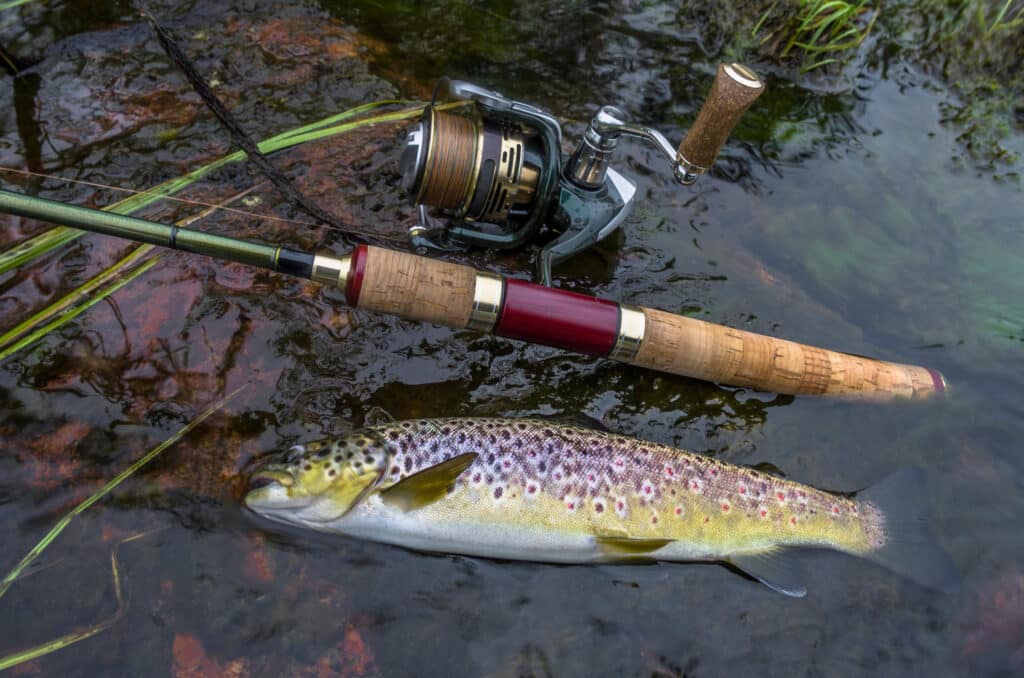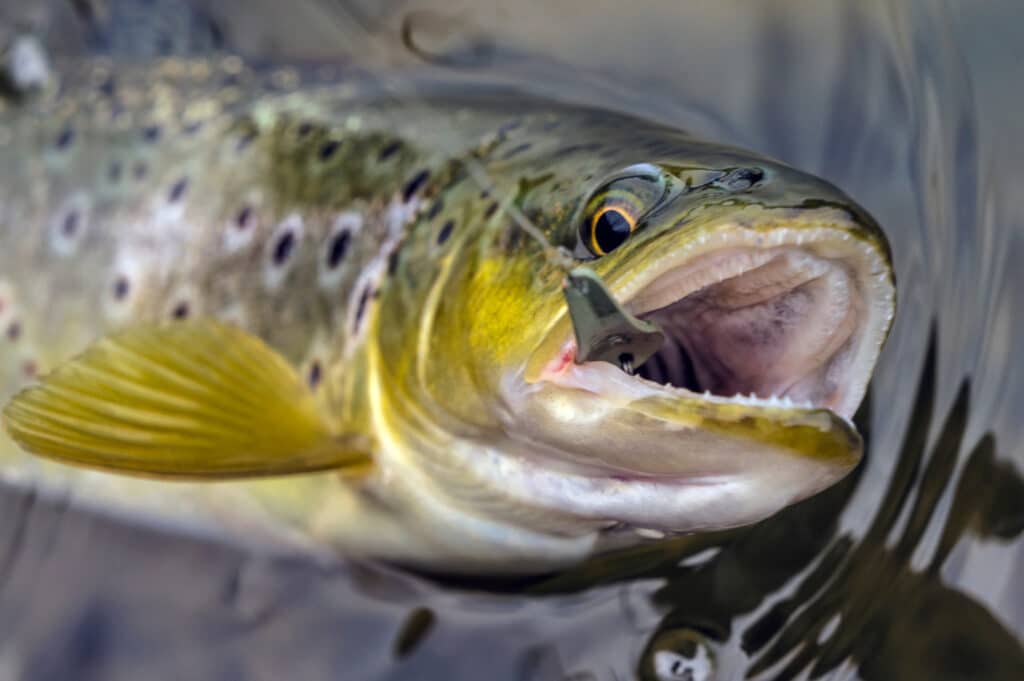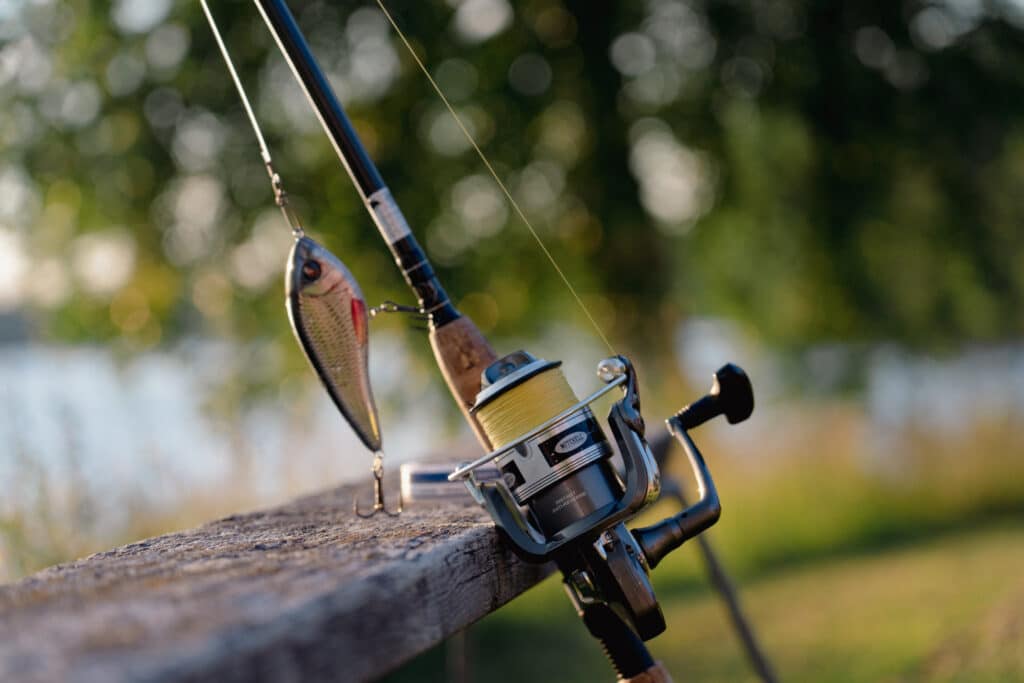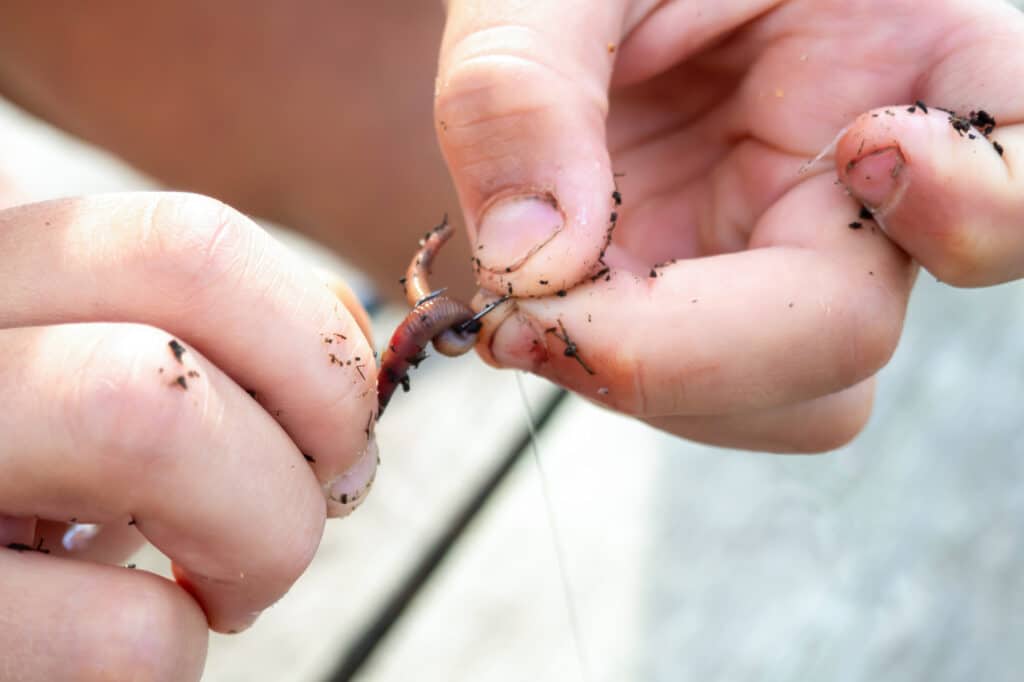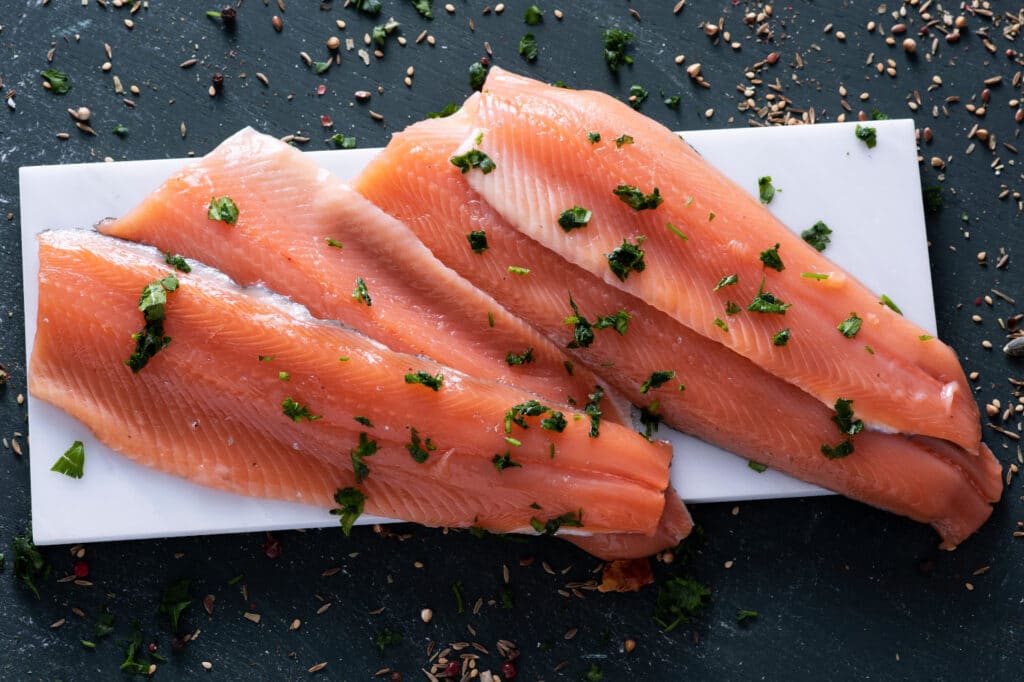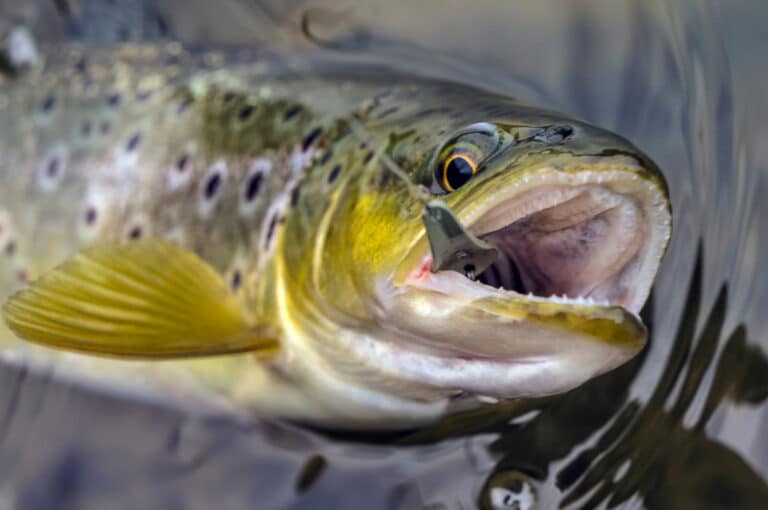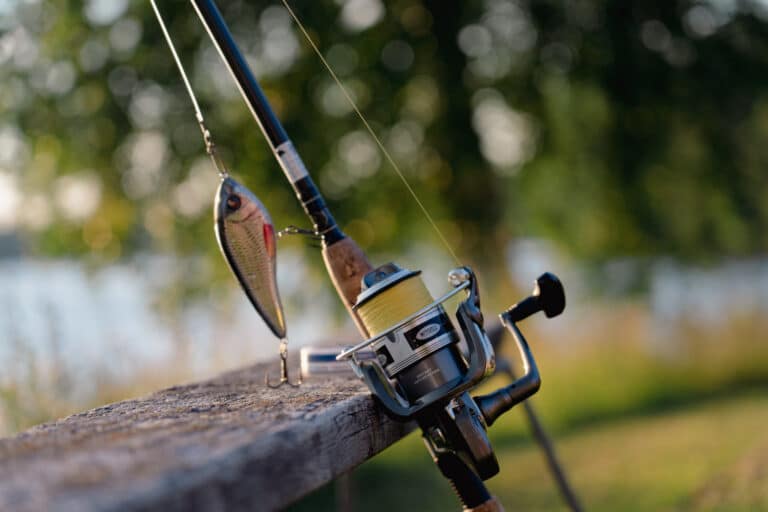Out of all the fishing I’ve done, there is nothing I love more than trout fishing.
Trout can be found in some of the wildest places in the country, and they fight like crazy for their size. Even a little 10-inch brook trout can feel like a monster on light tackle.
But trout and trout fishing styles vary so much that it can be confusing for beginners to choose a trout rod. And for many trout anglers, the main question is: should I use a light or ultralight rod for trout fishing?
In this article, I’m going to break down the differences and advantages of each. But if you just need a quick answer, here it is:
A light rod is best for beginner anglers or anyone who wants to catch bigger trout. Light fishing rods work best with 4-8 pound test line, and lures from 1/8 oz to 1/4 oz. Ultralight rods are best for more advanced anglers targeting small trout. They work best with line between 2 and 6-pound test, and lighter lures from about 1/32 oz to 1/8 oz. If you can only buy one, light rods are a little more versatile than ultralight rods.
There’s a lot more to it than that though, and there are plenty of other reasons to choose one option over the other. Read on to figure out what’s best for your style of fishing.
Rod Power Ratings: Light And Ultralight Explained
First things first: what does “light” or “ultralight” actually mean on a trout rod? Though the terms light and ultralight seem pretty self-explanatory, it’s important to put them into context.
Fishing Rod Power Explained
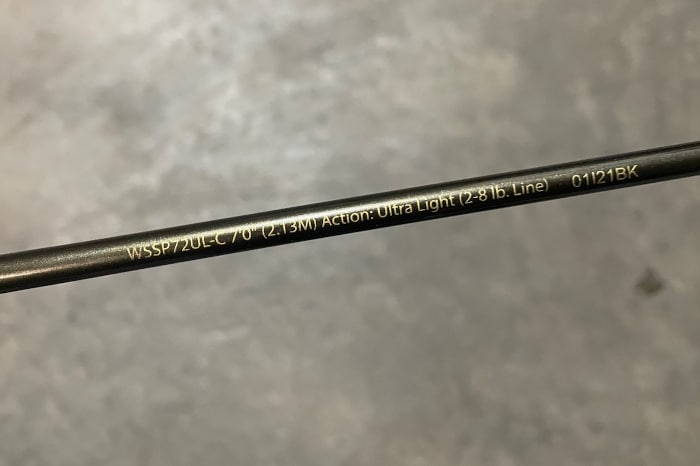
Both light and ultralight refer to a quality of a fishing rod called “power.” In the simplest terms, power is a measure of how much weight it takes to bend a rod. A light rod takes more weight to bend than an ultralight rod, so an ultralight rod will flex more easily than a light one. Power ratings go from extra heavy all the way down to ultralight, but when it comes to trout fishing, light and ultralight are the two main options.
Keep in mind that power is different from a rod’s “action,” which a lot of people think of as sensitivity. Action refers to where the rod starts to bend as you add weight. Fast action rods bend easily at the tip, while slow action rods start bending closer to the middle. Trout rods are typically fast or moderate-fast, but some anglers like slow-action rods, too.
Light Vs Ultralight Rod For Trout Fishing: Basic Qualities
Both light and ultralight rods have their place in trout fishing, and anglers with a rod arsenal will definitely have a few of both. But they each come with different advantages and fishing situations where they work best.
Light Rods: The Basics
Light rods are probably the most common rods used for trout fishing. Here are the typical specs for a light rod:
Length: 6’6″-7’6″
Line Weight: 4-8 pounds or 4-10 pounds
Lure Weight: 1/16 oz – 1/2 oz
Light rods are great for small lures, but can also punch up to cast heavier weights if necessary. They’re typically used for trout or panfish, but are stiff enough to even catch bass if you want them to. Light spinning rods are very versatile for a lot of styles of fishing, and you also have the option of getting a longer rod for even more versatility.
Ultralight Rods: The Basics
Ultralight rods are usually designed mostly for small panfish like perch and crappie. But many anglers also use ultralight rods for trout, even for fish in the 4-5 pound range. Here are the basic specs:
Length: 5′ – 6’6″
Line Weight: 2-6 pounds
Lure Weight: 1/32 oz – 1/4 oz
As you can see, ultralight rods work best for even smaller lures and lighter line. That typically means they’re best for small fish, but some anglers like to use them for bigger fish, too. Ultralight setups are usually shorter rods, so they work best on small water.
Choosing Your Trout Rod By Fish Size
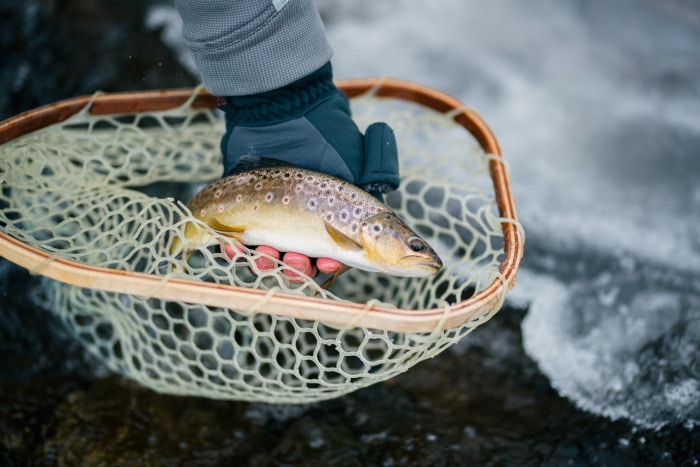
When choosing a trout rod, the size of the fish you might catch is a great place to start.
The important thing to remember when choosing by fish size is that you need to be able to fight the fish effectively. When fighting any fish, your rod should always stay bent, keeping tension on the line and the hook in the fish’s mouth. This is called keeping the fish “pinned,” and it’s crucial when landing fish. A rod that’s too heavy for the fish won’t bend enough, and a rod that’s too light is at risk of breaking.
Light rods are the most versatile option for trout fishing. You can use light rods for 8-inch, small stream brookies and still keep them pinned. But you can also reasonably land 4-5 pound rainbow trout on them. Paired with 6-8 pound line, light rods can handle bigger trout as well as little ones.
Ultralight rods, on the other hand, are a bit more specific. Landing a 5-pound rainbow trout on lighter lines is definitely possible, but it’s much harder to target larger fish with an ultralight setup. Ultralight rods shine with small fish, where you’ll be able to fight them more effectively and feel the lighter bites.
I use ultralight rods when I’m targeting smaller fish (in the 8-12 inch range), usually in small streams or mountain lakes. In bigger water, like lakes or big rivers, the trout tend to be bigger as well. I usually use light rods when I know there is potential for larger trout.
And if you can only buy one, a light rod is a clear winner in terms of versatility. You’ll lose a little bit of feel with smaller fish, but you’ll be able to target trout of all sizes.
Casting Distance: Choosing Your Trout Rod By Lure Weight
Another important thing to consider is how well you’ll be able to cast. Rod power ratings need to match the size of the lure you’re using, or your casting distance and accuracy will suffer.
Fishing rods work like a slingshot. As you cast, the rod bends and stores energy. Then when you release, the rod springs back and sends the lure on its way. But if your lure is too heavy for your rod, the rod won’t be able to propel it forward at the end of the cast. And if it’s too light, then the rod will never store the energy needed to cast it in the first place.
Light power rods are usually rated to cast lures between 1/16 oz and around 1/2 oz, with a casting “sweet spot” of about 1/8 oz. You’ll get more accuracy with lures of this size, but you still have a little room on either side to change it up if necessary. Light rods also work better for bottom fishing rigs where you need heavier weights to keep your rig on the bottom of the river.
Ultralight rods are usually rated to cast smaller lures, from about 1/32 oz up to 1/8 oz. This can be a huge advantage when you need a very small presentation to target, small, wary trout. You’ll also have more accurate casts with trout lures around 1/16 oz than you would with a light rod. Ultralight rods shine with light lures like the trout magnet, small marabou jigs, or even weightless lures like flies.
Ultralight rods are typically better for more experienced anglers, because casting a small lure requires a little extra skill. They also work best for more active fishing, where you need a more sensitive tip to feel your bait in the water. And if you want to catch other fish like perch, crappie, or bluegill, then an ultralight rod will be better for them, too.
Again, a light rod is a little more versatile for catching trout than an ultralight rod.
Which Rod Is More Fun?
When you hear experienced anglers talk about the light vs ultralight debate, you’ll often hear them talk about which rod is “more fun.” This all comes down to personal preference, but it’s worth exploring what that actually means.
Though trout can get huge, the vast majority of trout caught every year are under 12 inches. They fight hard for their size, and that fight is what a lot of trout anglers live for. That’s why most people would describe ultralight tackle as being more fun than light tackle.
Why? There are a couple of reasons. The first is that ultralight tackle requires more precision, finesse, and skill to catch trout. It’s all about being as small and natural as possible. The extra focus required means more fun, engaging trout fishing.
The second is that on ultralight fishing rods, even the smallest brook trout feels like a monster. You’ll be able to feel every headshake, wiggle, and turn. It also means you have to be careful with how you fight them, and you can’t just winch them in like you could with heavier tackle. Light line and a sensitive rod provide a much more engaging experience.
The lighter the tackle, the more you have to actually engage with your environment to be successful. That’s what makes it more fun, and I know plenty of anglers who are addicted to small stream trout fishing for this exact reason.
In the light vs ultralight rod debate, there’s no question which is more fun: it’s ultralight rods.
Light Vs Ultralight Rod For Trout: The Verdict
As is so often the case in fishing, there isn’t a one size fits all approach. Both light and ultralight rods are great for trout fishing. If you can have one of each, then you probably should. But if you can only pick one, here’s the summary:
Light fishing rods are best for beginners who want to catch a wider range of fish species. They’ll cast heavier lures better and handle big fish if you want them to. But they’ll still work great for small fish, and you can use them just about anywhere.
Ultralight rods are best for more experienced anglers, or those who mostly fish small water. They can’t cast as far as light rods, and they won’t easily handle big trout, either. But in small streams where you need small lures, ultralight rods are more fun and effective than light ones.
Final Thoughts
If you want a versatile, do-it-all rod for freshwater fishing, then a light rod is probably the way to go. But if you want a little extra challenge, or you want to catch mostly small fish, then an ultralight fishing rod might be a better option. You really can’t go wrong, though, so get out there and catch some trout!

